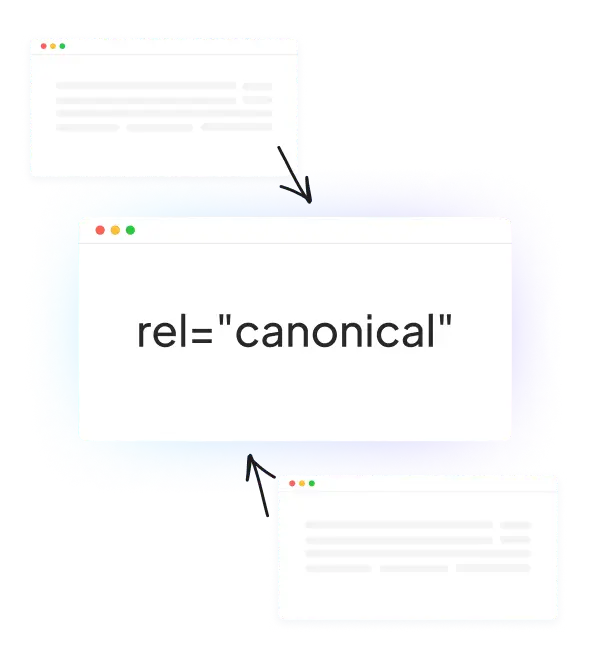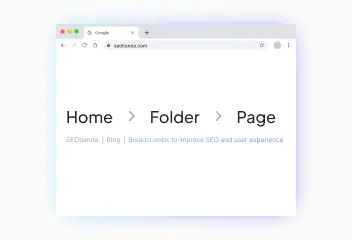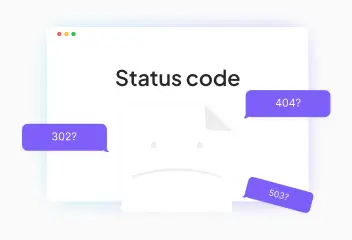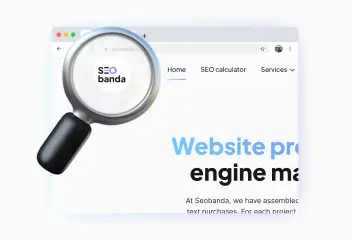Canonical tag: what it is and why you need it
The canonical tag is an element of the page code that was created to prevent duplicate content. It shows search engines which page is the main page and which is “similar” or “duplicate”. This helps prevent indexing problems and greatly helps SEO promotion! But there are also redirects! Why can’t you just set up a 301 redirect?





Which is better, canonical or redirect?
The answer to this question is ambiguous, just like SEO in general. If you have two pages that are exactly the same, but have different URLs, it is better to set up a 301 redirect from one page to another. In this case, the page whose code contains the redirect will not be indexed (or shouldn’t be, Google will decide whether to index it or not), and this page will be impossible to see, because when someone visits it, they will be redirected to another page.
But what if the pages are not identical, but just very similar (for example, the content in Ukrainian and Russian may be very similar, but we cannot close one of these pages and redirect users to another page)? In this case, it is best to use the canonical and indicate to the search engines that these are different pages. This does not affect indexing, but it will prevent Google from thinking that these are 2 identical pages and will not put a spoke in the wheel. It is important not to specify one language version as the main one and the other as the secondary one, but to set up canonicals for themselves.


Influence of canonical tags on SEO
The canonical tag has a great influence on the quality of a website in the eyes of Google. The main indicators are the following factors:
- Preventing duplicate content: search engines can detect several identical pages and consider them as duplicates, and this usually contributes to problems with site indexing and has a very bad effect on SEO performance. The canonical element allows you to deal with this and prevent such problems, which in turn has a positive effect on SEO.
- Improving SEO performance: with the help of the correct setting of the canonical tag, you can collect all the SEO weight on one page and improve its position in the search results.
- Improving the behavioral factor: Imagine that you went to a website and read some text, and then went to another page and saw the same thing. It’s unpleasant, and you will most likely leave this page, or maybe the site, as soon as possible. Such user actions negatively affect the behavioral factor and worsen SEO performance on the site!

Increase visibility
for your business: SEO solution for growth!


How to add a canonical tag to a page?

- To add a canonical tag, there are several things to consider:
- Determine the main page: before setting the canonical URL, you should determine where exactly to set it. Think about which page can be the main and preferred one. The page that should be indexed by search robots.
- Add the canonical meta tag to the HEAD section of HTML, it should look like this: <link rel=”canonical” href=”https://www.example.com/canonical-page”> (фото)
“https://www.example.com/canonical-page” – the main URL of your page
- If necessary, set up a canonical for other pages: if you have several versions of the same page but with different URLs. Add a canonical tag to each of these pages, specifying the main page.
- Check if the code is set up correctly: to do this, go to the page in a browser and look at the source code to make sure the tag works correctly.


Common mistakes in setting up canonical and how to avoid them?
- Incorrect URL in the tag: The most common mistake in setting up a canonical address is an incorrect URL. This is usually caused by a typo or inattention.
- Absence of the canonical tag: why is the absence of the canonical tag considered a mistake at all? It’s simple, this indicator makes the page more vulnerable to problems related to duplicate content. So, even if the probability of such an error is low, make sure that all pages have canonical links set up.
- Inconsistency between page content and canonical address: this problem can occur when an inappropriate canonical is set on a page that is not similar to the main page (i.e. the pages are different, but you tell Google that they are the same). Make sure that the content of the page matches the one to which the canonical tag is pointing.
- Incorrect use of canonical tags on multilingual sites: on such resources, canonical tags should point to the appropriate language version. Errors usually occur when you set up a canonical for a different language version or the main page of the site.
- An outdated canonical tag after changes on the site: when you make adjustments to the site, keep a close eye on the canonical addresses, as this often causes errors and incorrect operation of such tags. Such an error can lead to problems with indexing and page ranking.


What tools and plugins help to set up canonicals?

- SEO plugins for the WordPress platform: there are several such plugins that have the function of adding canonical tags to pages and help with the correct configuration. Examples of such plugins: Yoast SEO and All in One SEO Pack.
- Tools for SEO audits of web resources: some tools provide an opportunity to audit your site and identify existing problems with duplicate content. They also recommend canonical links to fix these errors. Tools like SEMrush, Ahrefs, or Moz can help you with this.
- CMS plugins and modules: Some content management platforms have built-in canonical tag management tools. They allow you to customize canonical tags without having to install additional plugins. Drupal and Joomla have such features.
- Specialized plugins and tools: Apart from the ones mentioned above, there are other plugins and tools that help in customizing canonical tags. Examples of such tools are Canonical URLS for Magento and Canonical Manager for OpenCart,

Increase visibility
for your business: SEO solution for growth!


History of canonical tags
The history of canonical tags, like most SEO tools, is connected with the development of search engines and the desire to improve search results and manage the structure of sites.
When the Internet was just emerging, the problem of duplicate information was very common and search engines had trouble identifying non-unique content. This led to a decrease in the quality of search results. Imagine that you are looking for an answer to your question, open the first link and after reading the information, go to the next one, and it says the same thing. You didn’t get any new information and wasted your time. It’s frustrating!
In 2009, Google offered a solution to this problem in the form of a canonical tag. This new (at that time) element allowed site owners to specify the main or priority URL for indexing.
Time passed and now canonical tags have become an integral part of SEO strategies and their use has become a global standard for preventing duplicate content. Search engines continue to improve their algorithms (including canonical tags) to index pages more accurately and reliably.
This small HTML tag seems to be just a trifle among other SEO issues and tasks, but it is actually no less important than all the other factors and can significantly affect the indexing and ranking of a website.


Conclusion.
Never forget about setting up canonical tags, because these small elements can both improve and worsen your site’s performance. It’s hard to imagine life without them nowadays, because with the huge amount of information in search engines and the world, duplicate content is a very popular problem! Check if you have set up canonical links on all pages of your website and continue reading other articles in our blog!
You may also like it

Breadcrumbs to improve SEO and user experience
Breadcrumbs are a navigation element on a web page that helps users understand their location on the site and makes it easier to return to previous sections. They...

HTTP status codes: What do they mean and why are they important for SEO?
HTTP status codes are short three-digit responses that a website server provides to a client's browser in response to a request. Each http response code has its own...

Logo for the website: How to create a cool logo?
A logo is the visual face of your brand. It creates the first impression of your business and influences its recognition. Try to think of the logos of Nova Poshta...












